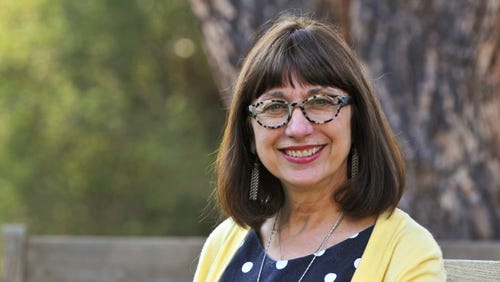One of the joys of the Storygram Labs research project is discovering long-standing advocates who have worked for decades to help children develop a love for reading. Today I’m talking about Maryanne Wolf, a professor, researcher, and advocate, and I’m aiming to share some insights and quotes from her work.
About Maryanne Wolf
Maryanne is Director of the Center for Dyslexia, Diverse Learners and Social Justice at UCLA.
She’s written a bunch of books, including Proust and the Squid: The Story and Science of the Reading Brain (2007), and Reader, Come Home: The Reading Brain in a Digital World (2018). I have both of those books on order (they aren’t available in my local library) and I will report back when I’ve read them! I’ve been reading interviews and listening to podcasts with Maryanne, and you can really hear her sincerity and her love for the work that she does.
What is reading?
I first discovered Maryanne in an interview for KAPPAN (‘connecting education research, policy, and practice’) in 2014.1 Early in the interview, she outlines what reading is (which is somehow a question I’d never considered):
Reading involves the acquisition of an entire symbolic code, which is both visual and verbal. Through reading, we take two independent functions, like vision and language, and we are able to connect them symbolically and make something new.
She goes on to describe all the different cognitive processes happening when one reads, culminating with:
The outcome is an extraordinary range of processes that all come together to propel thought. This same plasticity, however, also means that developmentally it can begin very simply and remain simple, or it can steadily elaborate over time.
She draws a distinction between the novice reading brain and the expert reading brain, and says that over our life span we must learn to connect the act of reading to our most sophisticated comprehension processes.
In essence, we move during expert reading from the surface to the deepest levels of thought.
Deep Reading
In 2023, Maryanne described this in a podcast as deep reading, or put another way, ‘leaving the self behind’. This is what happens when you slow your reading enough to immerse fully in the story, empathising with the characters. However, deep reading is a form of reading which is becoming endangered by the techniques that we practice when reading on screens.
Screen reading vs Paper reading
On screens, we read differently to reading on paper (and possibly, but not confirmed, on e-ink screens like a Kindle). When reading on a screen, we go into a quick-read or skim mode that aims to access the key information as quickly as possible, and may glance over some of the detail (especially flowery language and beautiful prose). However, reading on paper can cause the reader to slow down and engage more deeply with the text, even if it's an internet article you printed off yourself.
When you skim, you miss so much, including the beauty.
You might be asking: what about audiobooks? Well, I’m afraid that deep reading does not occur when listening to an audiobook. She says:
(Listening to an audiobook) doesn’t use the brain in the same way (as reading). We are paying attention, but not at the level of the full elaborated complex circuitry (deep reading) that can leave the self behind.
Side note: there’s an interesting thread in that podcast about people struggling to read after grief or trauma. The suggestion is that they might find it difficult to deep-read because their minds are anxious about leaving the self behind, in case something bad happens. As the interviewer says:
(Perhaps the anxious mind) feels compelled to tend to all the things that need tending to. It says, “I can’t go because I’m needed here”.
This could go some way to explaining why many people struggled to read books during the pandemic.
Digital Distraction
Back in 2014, the question on the interviewer’s lips was: do digital devices and screens prevent children from learning how to deep-read, how to ‘lose themselves’? The truth is, digital technology effects everyone’s reading, not just children. Even Maryanne, who has been advocating for this stuff for decades:
I tested myself by going back to one of my favourite novels, The Glass Bead Game by Hermann Hesse. It's a beautiful book. Well, basically, I couldn't read it. It was the equivalent of visual molasses. It was so stultifying. The prose style was prohibitive. The concepts were abstruse. It was paralysing my “normal style” of reading. I was so frustrated that I just put it aside. And then I realised the painful truth: I'm just like everybody else. I've changed totally. I'm not patient. I was not willing to slow myself down enough to appreciate the beautiful differences in Hesse's early 20th-century style.
(Note the great vocab in Maryanne’s writing!)
It’s not hopeless, however. Maryanne realised that once setting up a daily discipline of 20 minutes of reading (on paper, no digital distractions) her ability to slow and focus into deep reading did indeed return. But she had to be diligent and make that happen. How many of us take the time to do that for ourselves?
Silicon Valley Hypocrisy
After she published Proust and the Squid in 2007, Maryanne tells the story of Silicon Valley executives sending her (confidential) letters saying: “we are worried about our kids, and we are not allowing our children to use too much technology.”
This was way back in 2007, which was barely the starting point for most of the attention commanding apps and platforms that we know and love today.
I’ll close with this: In 2014, Maryanne was advocating for a balance between technology and deep reading to help children become ‘biliterate’ readers, capable of both. But it seems to me that in 2025, the scales have tipped far in favour of screen-based reading, and that deep reading is proving more challenging, even for those of us who advocate for it.
I’m encouraged by her statement that spending around 20 minutes a day can make a big enough difference to regain this ability, even against hours of screen-based reading.
I’ll just finish with this short quote from Maryanne:
Thank God for fun. With reading, I want joy, I want fun.
Amen to that — that just about sums up everything I feel on the subject.
That’s all for today, so thank you for reading Storygram Labs.
Reply or leave a comment, and please do forward this to someone you think might be interested in these posts.
Richardson, Joan. “Maryanne Wolf: Balance Technology and Deep Reading to Create Biliterate Children.” The Phi Delta Kappan 96, no. 3 (2014): 14–19.




Interesting read.
I do most of my reading on a device. Aging eyes. I can adjust contrast and font sizes.
The ability to look up meanings of words, highlight passages and take notes are the positives for me. A portable library and search functions are also pluses.The ability to easily do these things makes deep reading easier for me.
My lifelong reading habit with physical books may be the foundation that makes digital books okay by me.
Audiobooks put me to sleep.
So interesting!